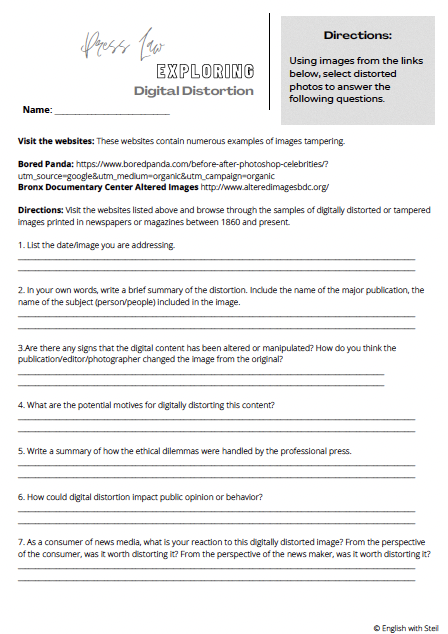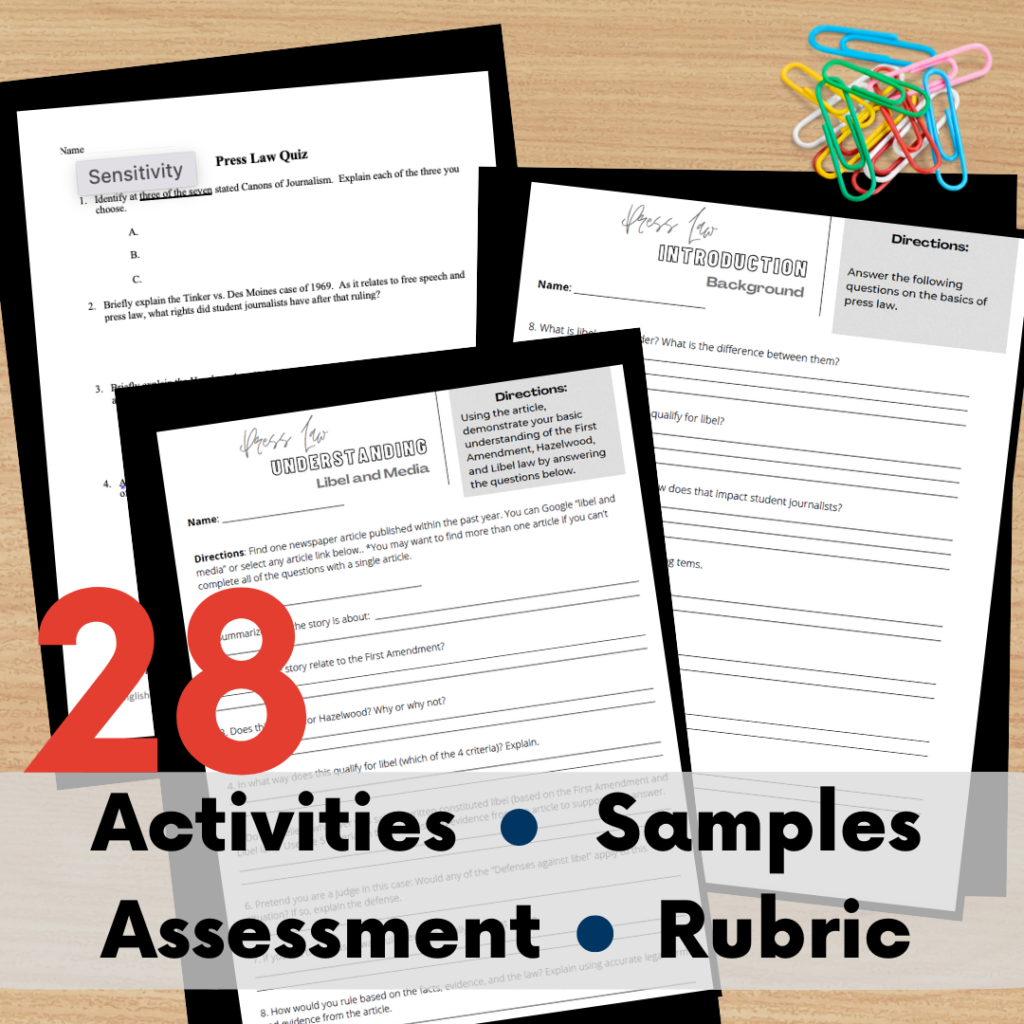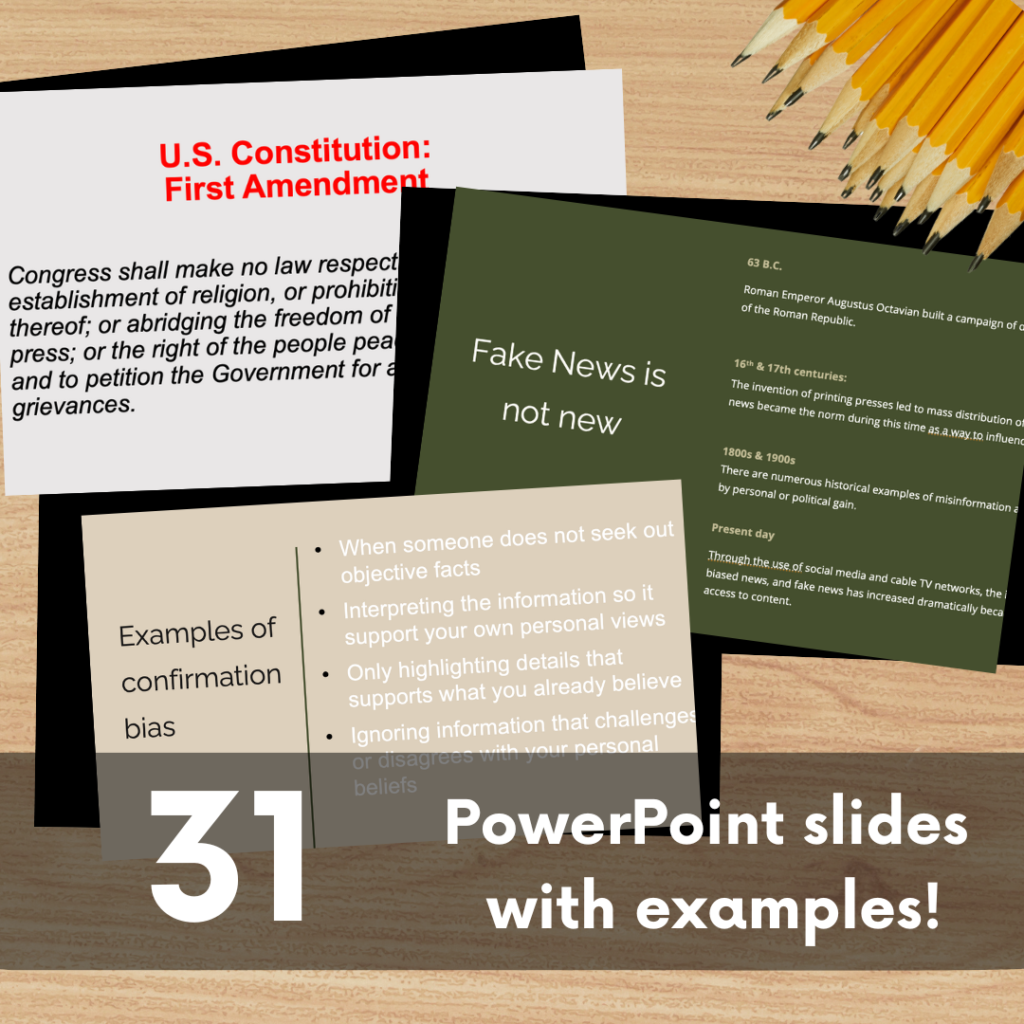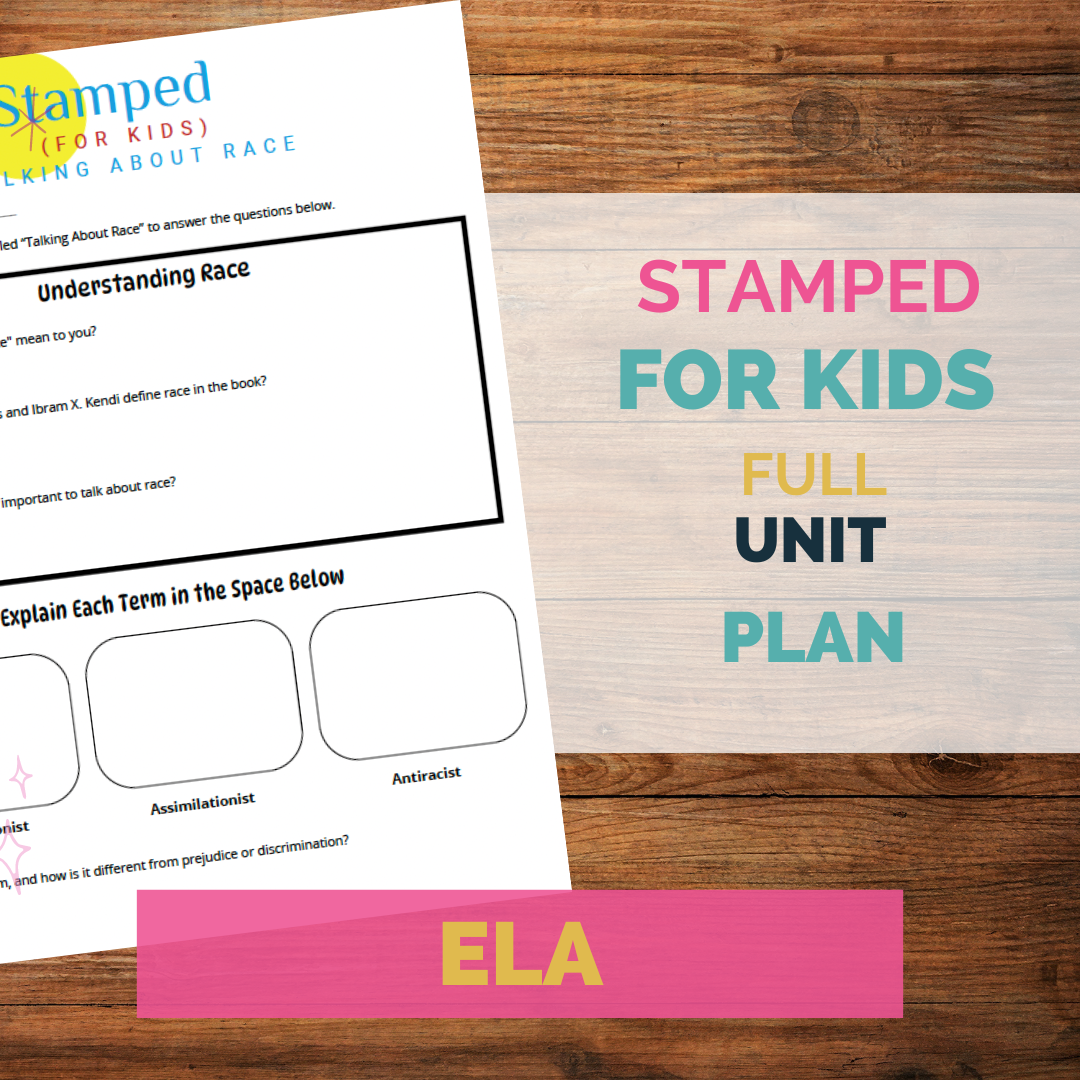
Navigating the world of student journalism can be a thrilling adventure, but it’s also crucial to equip our young journalists with a solid understanding of their legal rights and ethical responsibilities. In my journalism class, I’ve found that teaching student press law is not only essential but also incredibly engaging for students. Here are some ideas of how I introduce my students to the First Amendment, landmark Supreme Court cases, and the ethical considerations that shape responsible journalism.
Kicking Off with the First Amendment
We start with the basics: the First Amendment. This powerful piece of the U.S. Constitution lays the foundation for press freedom. I break it down for students, emphasizing the five freedoms it protects: speech, religion, press, assembly, and petition.
Activity Idea: Have students create posters illustrating each of the five freedoms. This not only reinforces their understanding but also makes for great classroom decor!
Landmark Supreme Court Cases
To give students a real sense of how the First Amendment applies to student journalism, we dive into landmark Supreme Court cases. Here are a few key cases we cover:
Tinker v. Des Moines (1969): We discuss how this case established that students do not “shed their constitutional rights to freedom of speech or expression at the schoolhouse gate.” This case is crucial for understanding student speech rights.
Hazelwood School District v. Kuhlmeier (1988): This case is a bit more complex, as it gives school administrators the authority to censor school-sponsored publications if the content is inconsistent with the educational mission of the school. We explore the implications and discuss what constitutes “legitimate pedagogical concerns.”
Bethel School District No. 403 v. Fraser (1986): This case highlights the limits of free speech in schools, particularly when it comes to lewd or indecent speech. It’s a great springboard for discussions about appropriate content in student publications.
Ethical Considerations
Understanding the law is just one part of the puzzle. Ethical journalism is equally important. We delve into several key ethical issues:
Libel: We discuss what constitutes libel and the importance of verifying facts before publication. Students learn about the potential legal consequences of publishing false information that harms someone’s reputation.
Confirmation Bias and Fake News: These topics are particularly relevant today. We explore how personal biases can affect reporting and the importance of seeking out reliable sources. I often include exercises where students identify bias in sample articles.
Public Figures vs. Private Citizens: This distinction is crucial in journalism. We discuss the different standards for reporting on public figures versus private citizens and why it matters.
Image Tampering: With the prevalence of digital media, we talk about the ethics of photo manipulation and the importance of authenticity in visual journalism.
Copyright: We cover the basics of copyright law, helping students understand the importance of respecting intellectual property and the proper way to use images, music, and other media in their work.

Bringing It All Together
To make these lessons engaging, I use a mix of activities, discussions, and real-world examples. Here are a few ideas:
Mock Trials: We stage mock trials based on landmark cases. Students take on roles of lawyers, judges, and plaintiffs/defendants, which helps them understand the legal principles in a memorable way.
Ethical Dilemmas: Present students with hypothetical scenarios involving ethical issues. For example, what should they do if they find out a popular student was involved in a minor crime? These discussions foster critical thinking and ethical decision-making.
Guest Speakers: Invite local journalists or legal experts to speak about their experiences. Hearing from professionals in the field can make the concepts we discuss more tangible and relevant.
Final Thoughts
Teaching student press law might seem daunting at first, but it’s incredibly rewarding. It equips students with the knowledge they need to navigate their rights and responsibilities as young journalists. By understanding the First Amendment, landmark Supreme Court cases, and ethical considerations, they become more confident and capable reporters.
If you haven’t incorporated a unit on student press law into your journalism class, I highly recommend giving it a try. Your students will benefit immensely from understanding the legal and ethical landscape of journalism, and they’ll be better prepared to produce responsible, impactful content.
Happy teaching and happy reporting!






